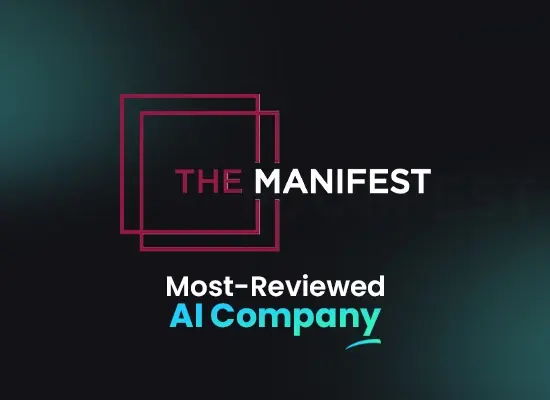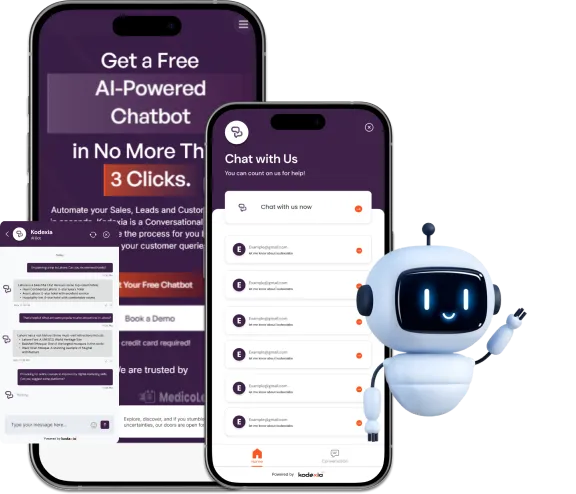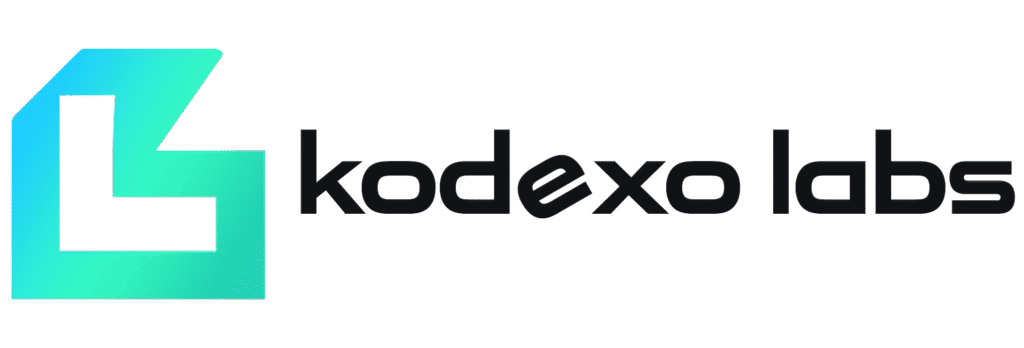From Helpdesk to Growth Engine, How an AI Chatbot for Business Helps in Modern World
- Ali Hasan
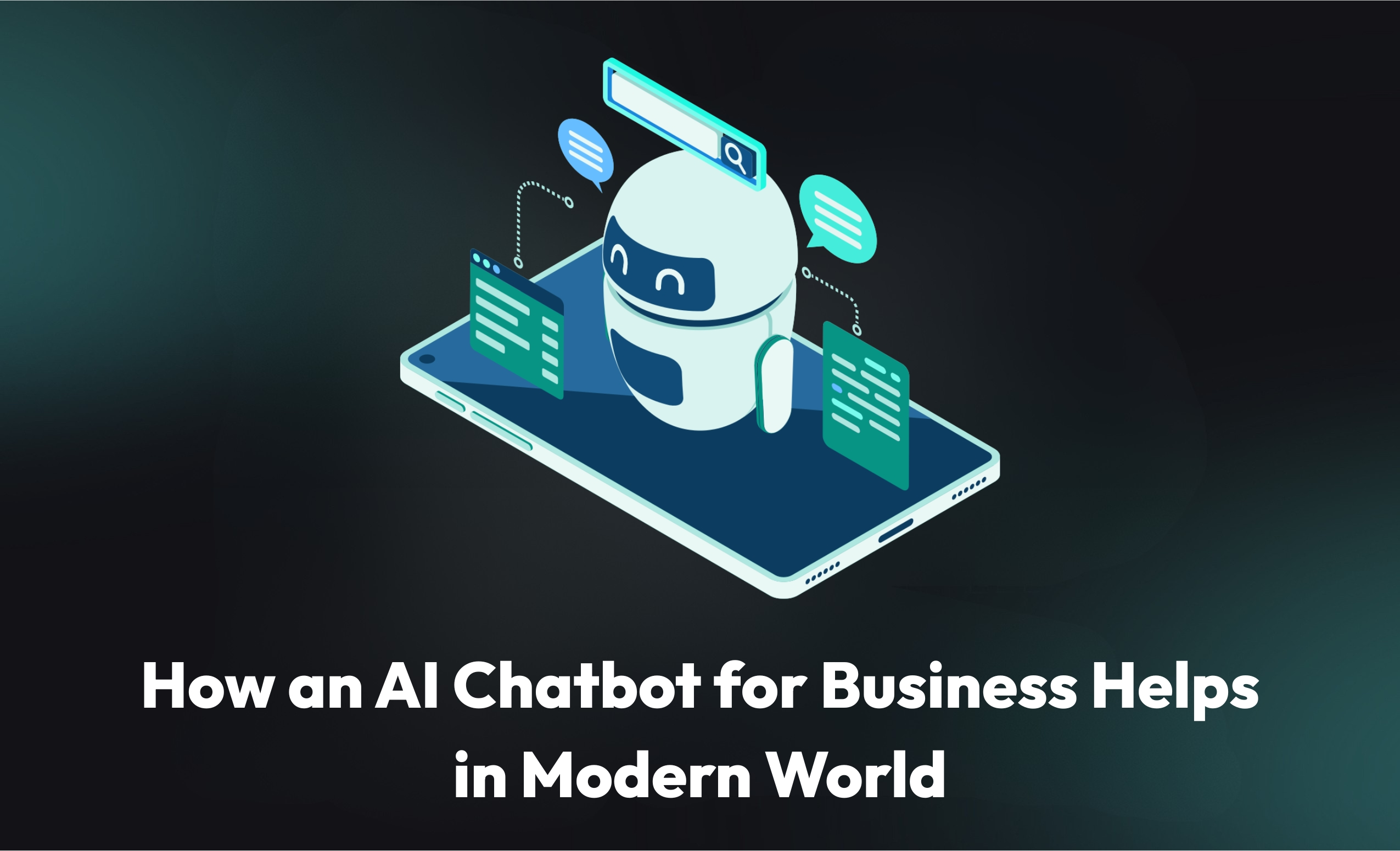
Contents
Why Chatbots Deserve Your Attention Now:
According to Grand View Research, the global AI chatbot for business market was valued at $7.76 billion in 2024—and is set to grow at over 23% annually through 2030. That’s not just demand. That’s transformation.
Today’s generative AI chatbots aren’t just built to answer questions—they’re designed to integrate into core operations, enhance employee experiences, and deliver faster, more data-rich interactions at scale. And increasingly, they’re replacing cumbersome FAQ pages and bloated support queues with real-time, contextual conversations.
Generative AI development services have paved a path, making AI chatbots for business even more powerful and effective in the modern world.
If your team is still asking, “What is an AI chatbot?”, now’s the time to ask something better:
What are the benefits of using AI chatbots when your business model depends on operational speed and CX consistency?
This isn’t hype. This is about scale, intelligence, and leverage. In fact, Accenture research confirms that companies embracing AI-led operations are already outperforming their peers—and are scaling investments in generative AI chatbots to unlock operational and customer-facing efficiency.
From Rule-Based Scripts to Generative Intelligence:
“Legacy bots followed a path. Generative bots help pave one.”
The earliest AI chatbots were rule-based tools that required pre-built flows and rigid inputs. A user might press 1 for billing, 2 for support—and still end up needing a human.
Those bots still exist. But they’re being overtaken by generative AI chatbots—systems that process natural language, learn from context, and act as a functional layer over enterprise data.
Want to ask an AI chatbot to enterprise data processing? With the right connections, you can. Need a conversational AI chatbot vs assistants breakdown for your internal help desk strategy? One bot can handle both HR policies and IT requests—often with better consistency than staff.
Modern AI systems can:
- Pull data live (via CRM, spreadsheets, product databases)
- Adjust language based on sentiment or tone
- Even respond visually (yes, there’s an AI chatbot that can send pictures)
The question has moved beyond “what are AI chatbots” to:
“How do AI chatbots work in real operations—and how can they outperform siloed support platforms?”
Read More Related Blogs:
The Strategic Edge: Where Chatbots Deliver True Business Value
Adoption isn’t hypothetical anymore. 69% of companies have integrated chatbots or virtual assistants, making AI chatbots for businesses one of the most widely adopted productivity tools in 2025.
AI chatbots for businesses aren’t just cutting down on call center costs—they’re driving measurable gains in efficiency, user experience, and cross-departmental coordination. Here’s what leaders are unlocking:
Cost-effective scale:
A generative AI chatbot can handle thousands of interactions without expanding headcount.
Better data intelligence:
An AI chatbot for analyzing data helps extract insights from internal systems—live and on request.
Enhanced Employee Experience:
Deploying AI chatbots for business internally improves onboarding, reduces email traffic, and boosts response time for HR and IT requests.
Improved Conversion Rates:
Get 7x ROI by AI Chatbots That Connect to What You Already Use
Let's Talk
Use Cases That Matter: Across Industries, Inside Teams
“AI chatbots for businesses aren’t just responding—they’re resolving.”
The real power of an AI chatbot for business emerges when it’s deployed where conversations are repetitive, data access is crucial, and human resources are limited. Which, for most companies, is everywhere.
In retail, the impact is even more pronounced. IBM reports that brands are allocating over 3% of revenue—more than $33 million per $1B annually—to AI-driven tools like AI chatbot development apps, proving these tools are seen as essential infrastructure, not experiments.
Let’s explore where these bots are creating value across industries and internal teams:
External Use Cases:
Internal Use Cases:
The Integration Advantage: Action, Not Just Conversation
“A chatbot that doesn’t connect can’t convert.” A common misconception is that AI chatbots are just glorified search boxes. But what makes a generative AI chatbot powerful is its ability to integrate directly into your systems—and take real, trackable actions.
Key Integrations That Matter:
- CRM – Pull customer data, push updates, flag churn risk
- Calendar/Meetings – Book calls, send invites, reschedule events
- Payments – Process transactions or verify billing status
- HR Systems – Access employee records, benefits data, policy updates
- Support Software – Create, update, or close tickets automatically
How do AI chatbots work in this context? Through APIs and no-code platforms that make them functional partners, not passive responders.
Without integrations, a chatbot is informational. With them, it’s operational.
This is also where chatbot vs conversational AI gets practical—only a conversational AI chatbot vs assistants model can handle context switching and action-triggering across multiple tools.
Want to know how to implement AI chatbots in business without rebuilding your stack? Start with platforms that support the tools you already use—like Slack, Salesforce, HubSpot, or Google Workspace. If you’re looking to evaluate options, this list of platforms that integrate with chatbot software is a great place to begin. These platforms connect easily to existing systems, giving your AI chatbot for business real power, fast.
Common Concerns, Clear Answers:
1- Can AI Chatbots Make Mistakes?
2- Is chatbot AI Safe?
3- Are Chatbots Generative AI or Just Scripts?
4- Can It Reflect Our Brand Voice?
5- How Do We Train AI Chatbots to Improve Over Time?
And if your team asks, “What are AI chatbots really good at?”
the short answer is:
Anything that’s repetitive, data-dependent, or answerable in under 20 seconds.
Implementation Blueprint: Start Small, Scale Smart
“You don’t need to overhaul your stack—you just need one win.”
When leadership teams ask how to implement AI chatbots in business, the assumption is often that it’s an all-or-nothing move. But the smartest deployments start small, learn fast, and scale with confidence. Here’s a 5-step blueprint to keep implementation low-risk and high-reward:
Identify One High-Impact Use Case:
Start where volume is high, but complexity is low. Examples:
- Repetitive FAQs
- Order status requests
- Internal PTO questions
These are the AI chatbot action examples that bring quick ROI.
Choose a Platform with Native Integrations:
Prepare and Structure Your Data:
Test with a Controlled Audience:
Monitor, Learn, and Scale:
Before you launch, list the top 10 questions customers consistently ask. These can come from support tickets, social messages, or phone calls. Feeding this into your AI chatbot for business ensures you’re building for actual user demand—not assumptions.
Beyond Automation: How Chatbots Learn and Reflect Your Brand
“Every interaction is insightful. Every response is brand.” Too many companies think of chatbots as tools to reduce support volume. The best ones think of them as brand experience engines—and business intelligence systems. Modern generative AI chatbots don’t just answer questions. They create feedback loops:
- Which questions are asked most often?
- Where do customers get confused?
- What causes users to bounce mid-flow?
This data feeds into product, marketing, and support decisions. An AI chatbot for analyzing data can tell you more about user friction in 48 hours than a 6-month survey campaign.
Your chatbot is more than a tool—it’s a voice. One of the simplest ways to improve performance is to match your brand’s voice. Whether professional, playful, minimalist, or warm, your tone should be trained into every interaction.
That’s how a bot becomes part of the brand experience—not a departure from it.If your organization values warmth, precision, and speed, so should your bot. Train it accordingly.
That’s the difference between a chatbot that replies and one that represents. And it’s what defines an AI chatbot without restrictions—one that’s flexible enough to be strategic.
Get 52% Efficiency Boost and 38% Lower Support Costs—With One Chatbot
Let's Talk
Read More Related Blogs:
Final Word: Chatbots as a Scalable Strategic Asset
“You’re not automating for efficiency. You’re building for intelligence.” Whether you’re just learning what is an AI chatbot, or benchmarking what are the top AI chatbots for businesses in 2025, the strategic question isn’t “Should we use AI?”
It’s: Where can we get the most leverage from it—now?
And the momentum is undeniable. Global enterprise AI spending is expected to hit $307 billion in 2025, doubling to $632 billion by 2028. The scale is staggering—and AI chatbots for business are among the most accessible entry points.
The truth is, AI chatbots for businesses are no longer emerging tech. They’re mature, modular, and market-tested. They scale support. They speed up internal ops. They turn conversation into conversion and insight.
The companies getting ahead aren’t the ones building the most bots—they’re the ones building the smartest bots: connected, trained, and aligned to business goals.
So if you’re looking for a true AI chatbot for business that can scale with your team, speak in your voice, and improve every day—start small, start now, and scale intentionally.

Author Bio
Read More Blogs
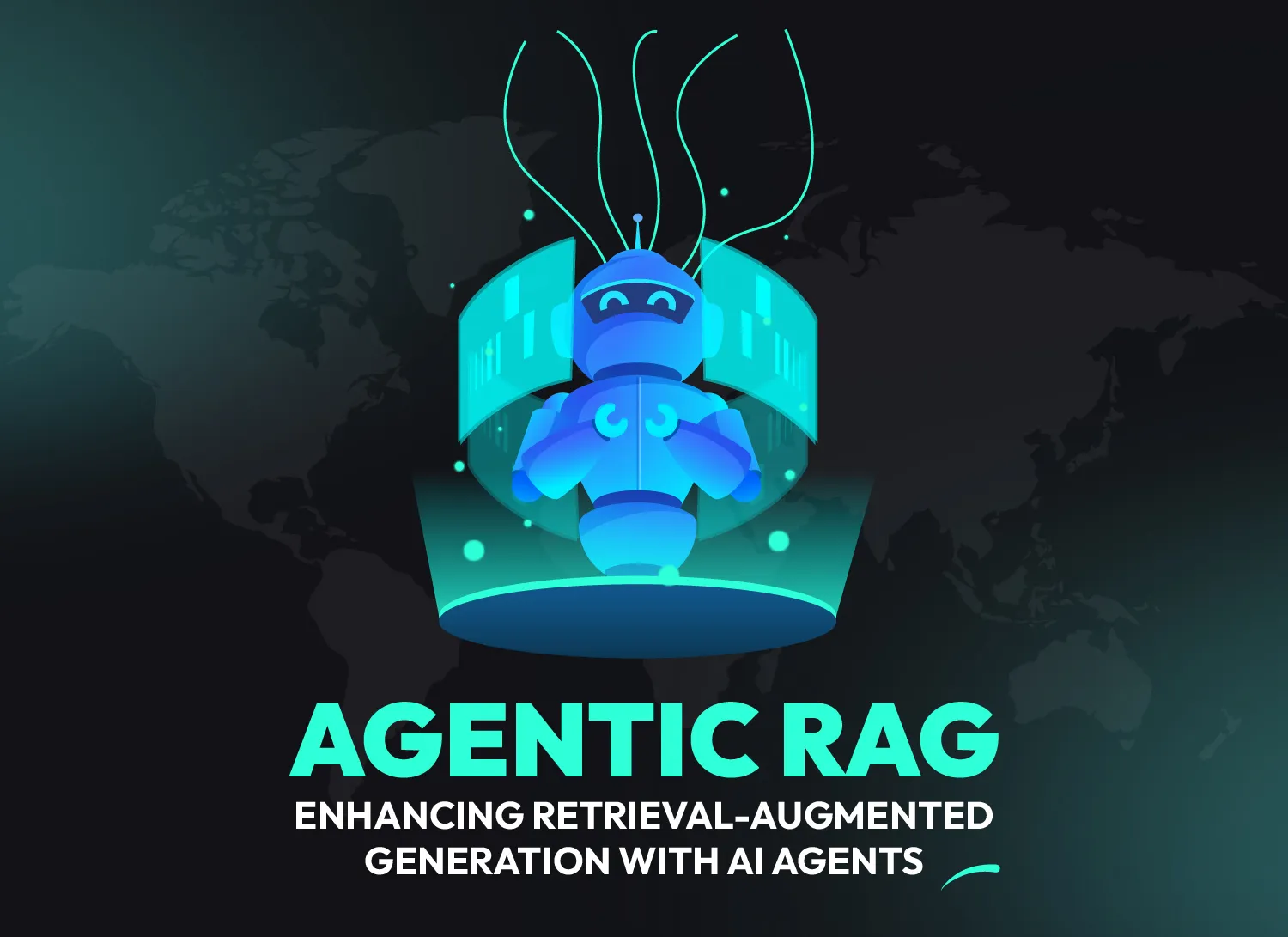
Agentic RAG: Enhancing Retrieval-Augmented Generation with AI Agents

Google’s AI-powered Search is upgrading: What’s new in Google SGE?
